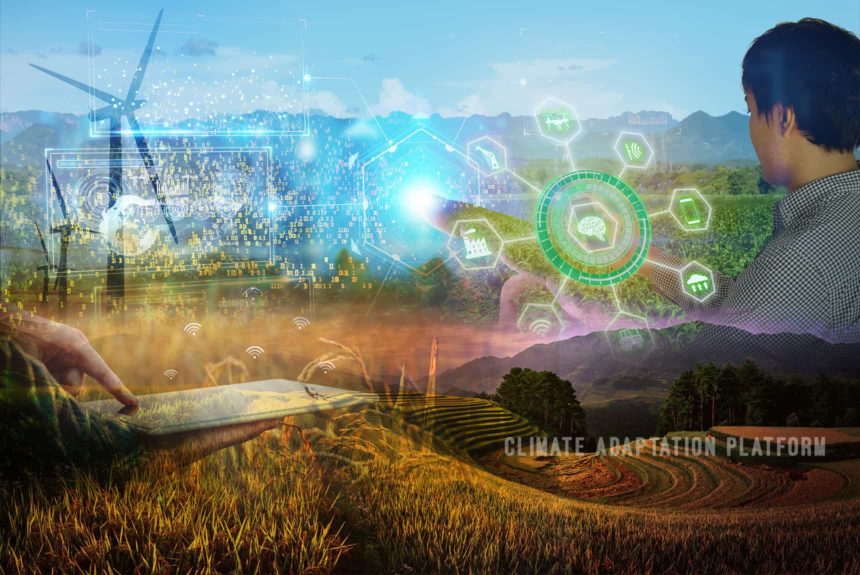Asia-Pacific is one of the most vulnerable regions, and the impacts are projected to intensify in the future if no actions are taken.
While some countries in the region, like Australia and South Korea, have good climate adaptation capacities, many struggles to adapt because of insufficient resources and capabilities.
The report termed these as countries with special needs (CSNs) – countries most vulnerable and have the most need for adaptation interventions.
A paper series by ESCAP published in December 2021 addresses the gap between the urgency to adapt to climate change and digital technology by assessing the key enablers and commonalities between different case studies worldwide in using digital technologies for climate adaptation.
The paper aims to answer the following questions:
- How and what digital technologies contribute to climate change adaptation?
- What policy gaps exist n the use of digital technologies for addressing key issues of climate change adaptation in Asia and the Pacific?
- What policies and strategies worldwide have been successful in using digital technologies for climate change adaptation?
- What are the key enabling factors that allow the use of digital technologies for climate change adaptation?
- How can CSNs from Asia and the Pacific replicate the good practices from the case studies to mainstream climate change adaptation into digital technology-related policies?
It explains:
“Digital technologies can potentially unlock innovative solutions to complex development challenges brought by climate change and help CSNs leapfrog development gains. But despite the urgency to adapt to the changing climate and the promising solutions that digital technologies offer, the interlinkages between the two sectors at the policy level are unclear. While significant contributions of digital technologies to mitigate climate change have been widely applied across the region, fewer examples can be found for climate adaptation.”
Case studies on the use of digital technologies for climate adaptation
Section 3 of the report presents case studies from around the world:
- Florida, United States in their use of weather stations for pest control;
- Brazil, Italy, and Spain’s use of the IoT for water management;
- Drones for forest fire prevention and management in the Republic of Korea;
- Satellite for flood forecasting in Bangladesh and India; and
- Australia’s use of satellites for coral reef conservation.
While constant research and improvements supported by national ICT and sound policies have enabled the application of digital technology for climate adaptation, many of these projects are still at pilot states stages or not scaled. The current digital technologies are primarily simple and not necessarily costly.
The section also presents key findings from policies and practices from the case studies presented.
The following policy recommendations aim to accelerate the use of digital technologies for climate adaptation, especially in CSNs from the Asia-Pacific region:
- Build capacity to bridge climate change data gaps. This is especially true in small island developing states (SIDS) and least developed countries (LCDs) that lacks the infrastructure, financial and human capacity to access observational data critical for quality weather forecasts and climate analyses. As a way forward, capacity building training should be offered to countries in Asia Pacific that do not have the relevant skills and competencies to collect, understand, and process climate-related data, prepare metadata, and establish mechanisms for collaboration with data providers.
- Explore financial alternatives to fund digital climate adaptation projects. CSNs often face financial and economic constraints, which hinder realising such capital-intensive projects. Hence, their governments could consider using other financing methods, like incentivising the private sector to invest in climate adaptation and mitigation options, through tax incentives, for example. And use creative sources to collect weather data such as crowdsourcing mechanisms and climate data at the local/national levels to help develop risk maps and early warning systems is also effective.
- Strengthen governance and institutional capacity to mainstream climate adaptation into ICT policies. The report identifies regulatory barriers – bureaucratic delays and slow legal process, existing corruptions, as challenges to implementing ICT policies and strategies. There is the need to review current ICT policies and regulations at the national and regional levels, enhance collaboration across ministries, and clearly outline linkages between ICT policies and climate adaptation.
- Accelerate the development and implementation of digital climate adaptation projects. Governments of CSNs often lack the financial and technical capacity to implement projects successfully. They would need support from multiple stakeholders – the private sector, academia, and even humanitarian organisation to pool human and financial resources.
- Include climate adaptation projects in regional cooperation platforms that advance digital development. Despite existing cooperation platforms that advance climate adaptation, these do not manage to exploit the use of digital technologies for climate adaptation fully. The Asia-Pacific Information Superhighway (AP-IS) provides a unique platform for stakeholders in the region to work together. Including climate adaptation projects will increase policy knowledge and strengthen the current understanding of and preparedness for climate change.
- Future research. Further research is needed on digital technologies for the most pressing challenges that climate change poses to the most vulnerable in the Asia-Pacific region.
Read the entire report by clicking the link below:
Source Citation:
Bernal Aparicio, C. and Ofa, S.V. (2021). Digital technologies for climate change adaptation in Asia and the Pacific. United Nations ESCAP, Information and Communications Technology and Disaster Risk Reduction Division, December 2021. Bangkok.



Leave a Reply